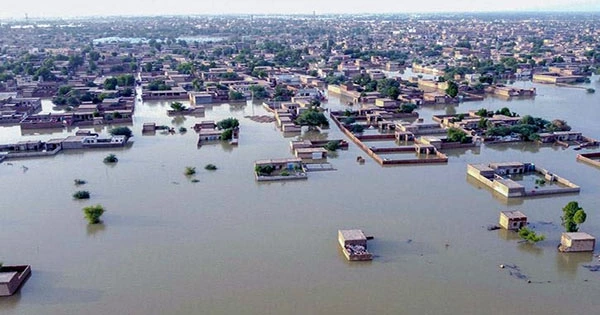Some of the most catastrophic weather occurrences of the developing climate crisis have occurred in Pakistan this year. In the spring, the area suffered a heatwave that broke records, with some sections reaching 47°C (116.6°F), which was followed by the worst flooding in ten years. According to the country’s environment minister, one-third of the nation is currently underwater, which is an area the size of the state of Colorado or half the size of France.
The extent of the damage is evident from the most recent space observations made by Copernicus Sentinel-1 of the European Space Agency (above). The Monsoon clouds, which have dumped more than ten times the average amount of rain over the nation, may be seen through by radar observations.
The Indus river has transformed into a lake in the NASA Earth Observatory photos below. Between July 31 and August 31, the Qambar and Shikarpur districts represented experienced 500% more rainfall than usual.
Over 33 million people, half of them are children, have reportedly been impacted by the floods. In the flood, over 1,100 people have died. Shehbaz Sharif, the prime minister of Pakistan, calculated that just fixing the infrastructure would cost $10 billion.
Many have noted that while Pakistan has seen some of the most catastrophic weather connected to climate change ever recorded, it is only accountable for a minuscule portion of the greenhouse gas emissions that worsen these extreme weather occurrences. There have been calls for the international community, particularly the biggest polluters, to do more to assist nations who have made minimal contributions to climate change but are currently suffering the harshest consequences of the crisis as it develops.















